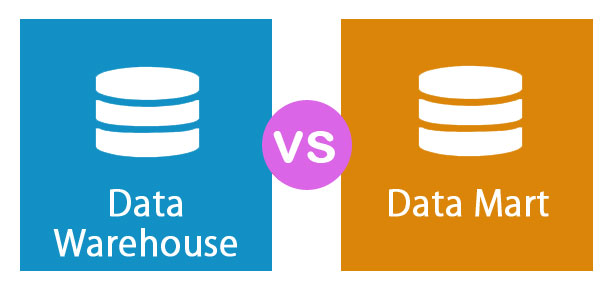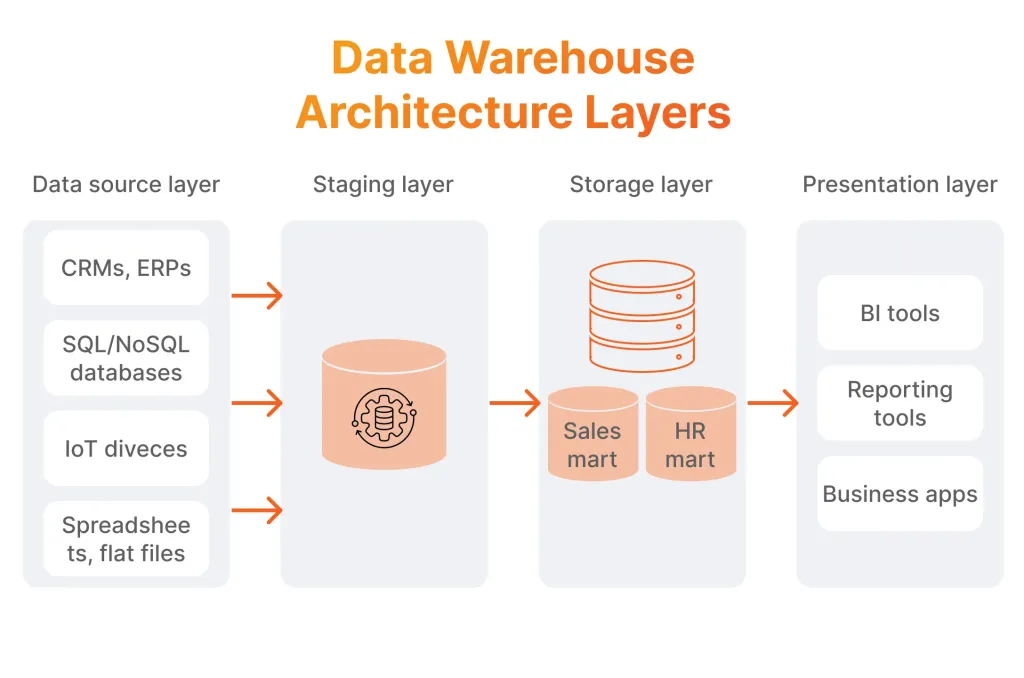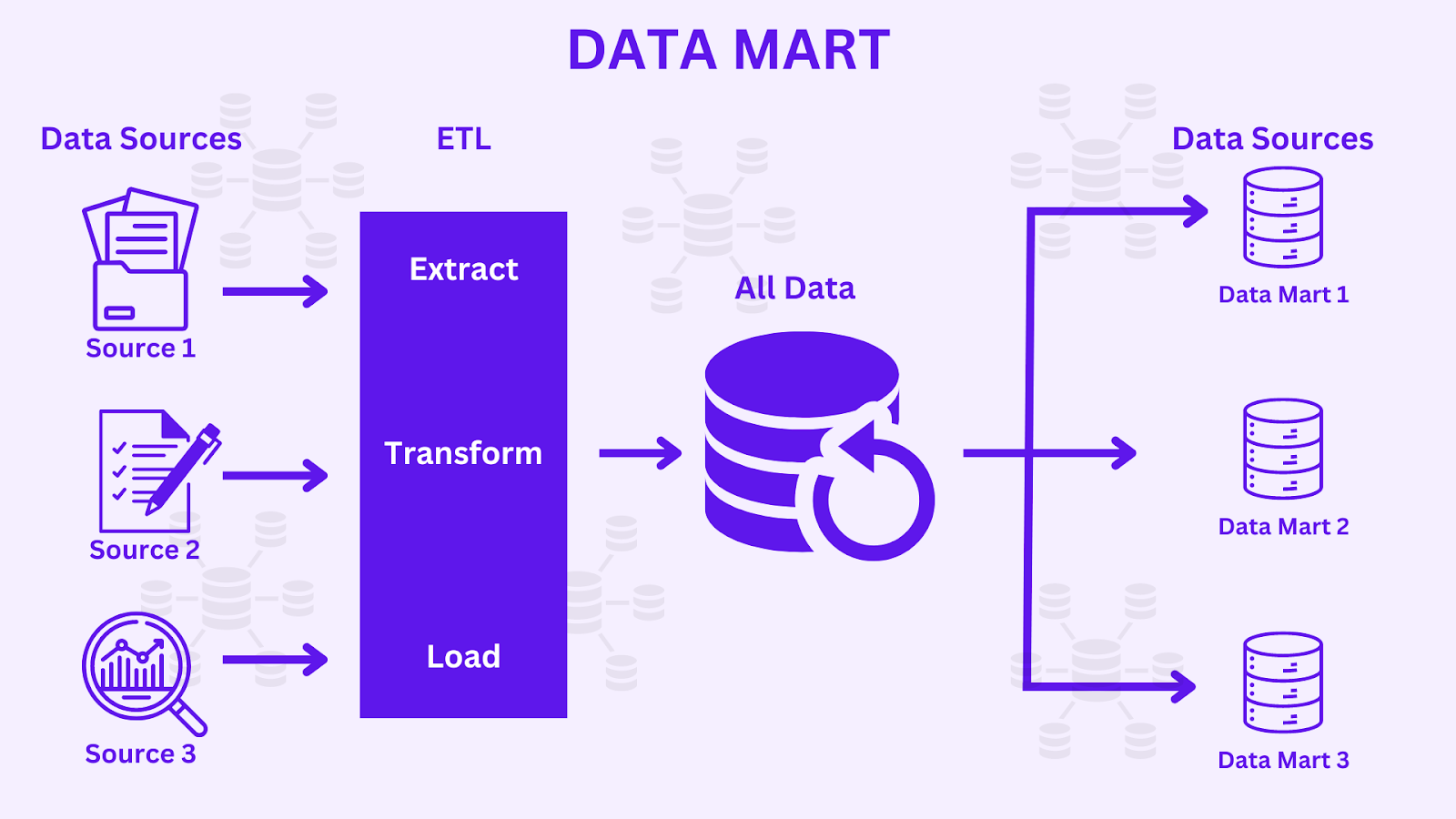
In the era of data-driven decision-making, businesses need fast, reliable access to insights across departments. But not all data infrastructure is created equal, especially when choosing between a data warehouse and a data mart. While both store structured data for analysis, they differ in scope, scale, and purpose. Understanding these differences is critical for building a scalable analytics stack that balances central governance with team-level flexibility. In this article, we’ll break down the fundamentals of each, compare their use cases, and explore how to choose the right approach, especially in the context of today’s modern cloud data stack.
Before diving into differences, it’s important to understand what a data warehouse and a data mart are at their core. Both are types of data repositories designed to support business intelligence and analytics, but they serve different purposes and audiences.
A data warehouse is a centralized repository that stores integrated data from various sources across the entire organization. It’s designed to handle large volumes of historical and current data from multiple departments, marketing, sales, finance, operations, and more. The goal is to provide a unified source of truth for enterprise-wide analytics and reporting. Data in a warehouse is typically cleaned, transformed, and organized for fast querying using tools like SQL, BI platforms, or embedded analytics solutions like Explo.
A data mart, on the other hand, is a smaller, more focused version of a data warehouse. It is usually scoped to serve the needs of a specific business unit or team, such as sales or marketing. Data marts are often subsets of the data stored in the warehouse, tailored for department-specific queries, dashboards, or KPIs. Because of their narrow focus, data marts are faster to build and easier to maintain, making them a practical choice for agile teams that need quick access to relevant insights.
While both store structured data for analytical purposes, the key distinction lies in scope and control. Warehouses offer broad organizational access and central governance, while marts provide speed and autonomy at the team level. In modern data architectures, it’s common to see both coexist, each serving different layers of the business, from high-level executive dashboards to tactical team reporting.

While both data warehouses and data marts are essential components of a modern analytics infrastructure, they differ in several key areas: scope, ownership, complexity, performance, and cost. Understanding these differences helps organizations decide how to architect their data stack effectively.
1. Scope and Coverage
A data warehouse serves as a centralized repository for the entire organization. It consolidates data from multiple departments—marketing, sales, finance, product, and more. In contrast, a data mart is narrower in focus, typically built to serve a single department or use case, such as a sales performance dashboard or marketing attribution model.
2. Ownership and Control
Data warehouses are usually managed by centralized data or engineering teams, ensuring governance, data quality, and standardized metrics across the organization. Data marts, on the other hand, are often owned by individual business units or analysts, allowing for faster iterations and more autonomy, but sometimes at the cost of consistency.
3. Data Volume and Complexity
Warehouses handle large volumes of data and support complex queries across multiple tables, schemas, and domains. Marts are smaller in size, optimized for simpler, more focused reporting and analysis.
4. Development Time and Agility
Building a full-scale data warehouse can take months, involving multiple stages of ETL, modeling, and validation. Data marts are quicker to implement, often spun up rapidly to meet immediate reporting needs.
5. Performance and Cost
Because of their broader scope and heavier workloads, data warehouses can be resource-intensive and more expensive to maintain. Data marts, being lighter, can offer faster performance for specific queries at a lower cost.
In practice, many companies adopt a hybrid approach, centralizing key metrics in a warehouse while giving teams flexibility through self-serve data marts.
Choosing between a data warehouse and a data mart depends on your organization’s size, complexity, data maturity, and specific analytics needs. Both have their place in a modern data architecture, but knowing when to use each can help you scale more effectively and serve different user personas.
A data warehouse is ideal when your organization needs a single source of truth that spans multiple departments and functions. If you're aiming for cross-functional reporting, governed metrics, and data consistency across executive dashboards, a centralized warehouse is the way to go. It supports complex data models, joins, and historical analysis at scale, making it essential for enterprise-level analytics.
On the other hand, a data mart is useful when teams need speed, autonomy, and focus. For instance, if your marketing team needs to quickly analyze campaign performance without waiting for engineering resources or changes to the main warehouse schema, a dedicated data mart enables faster decision-making. It can be tailored specifically to a department’s metrics and logic, reducing complexity and improving performance for domain-specific queries.
Mart is especially effective in early-stage companies that want to stand up analytics quickly or in larger enterprises that need decentralized access while maintaining warehouse governance at the core. They're also useful when the warehouse is too large or too slow for tactical reporting tasks.
In reality, most mature organizations adopt a layered approach:
By using both strategically, companies balance control with speed, ensuring data accessibility without compromising accuracy or governance.

A data warehouse is the backbone of enterprise analytics. It’s best suited for organizations that need a centralized, scalable, and governed environment to support complex data operations across multiple business functions. Here are scenarios where using a data warehouse is the right choice:
You Need a Single Source of Truth
If your organization requires consistent, cross-functional reporting—such as company-wide dashboards, financial reports, or executive KPIs—a centralized data warehouse ensures standardized metrics and shared definitions.
You Work with High Data Volume and Variety
Data warehouses are optimized for large-scale data from multiple systems: CRM, ERP, web analytics, transactional systems, and more. They can store historical data and support complex queries across diverse data sources.
You Require Strong Governance and Security
With centralized control, data warehouses offer robust role-based access, lineage tracking, and auditability. This is critical for regulated industries (e.g., finance or healthcare) and enterprises with strict compliance requirements.
You Have a Dedicated Data Engineering Team
Warehouses typically require setup and maintenance by data engineers, including ETL pipelines, schema design, and performance tuning. If you have the technical resources to manage this infrastructure, a warehouse offers maximum flexibility and power.
You’re Building a Modern Data Stack
If you're adopting tools like Snowflake, BigQuery, or Redshift, and layering in BI tools or embedded platforms like Explo, the warehouse acts as the foundational layer that powers both centralized dashboards and self-serve analytics.
In summary, use a data warehouse when scale, accuracy, and long-term governance are your priorities. It’s the right fit for teams aiming to support broad analytics use cases with consistency and control at the core.

A data mart is the go-to solution when speed, autonomy, and simplicity are more important than enterprise-wide consistency. It’s ideal for smaller teams or departments that need focused access to data without navigating the complexity of a full-scale warehouse. Here are situations where using a data mart makes the most sense:
You Need Quick, Department-Specific Insights
If a marketing or sales team needs fast answers to questions like “Which campaigns drove the most leads last week?” a data mart provides a lightweight, tailored dataset that eliminates the overhead of querying enterprise data models.
You Want to Empower Business Users
Data marts enable non-technical teams to own their data domain. With smaller, easier-to-navigate datasets and purpose-built schemas, business analysts can explore and visualize data without relying heavily on engineering resources.
You’re Working with Limited Engineering Bandwidth
Early-stage startups or fast-moving teams may not have the time or resources to build out a full warehouse. A data mart can be spun up quickly using tools like dbt or even delivered through views on top of warehouse subsets to meet immediate needs.
You Prioritize Speed Over Centralization
In fast-paced environments, waiting for centralized teams to model data can slow decision-making. A data mart allows teams to move independently while still using structured data, especially when paired with tools like Explo to visualize and share insights efficiently.
You Want to Prototype Before Scaling
Data marts are also great for piloting analytics use cases. You can validate business logic, user needs, and reporting structures before formalizing them into a central warehouse schema.
In short, use a data mart when agility, focus, and departmental ownership are your priorities, without sacrificing structure or performance.
When building out your data infrastructure, the approach you take to designing data warehouses and marts can significantly impact scalability, maintainability, and adoption. Two primary design philosophies dominate the landscape: top-down and bottom-up.
Top-Down Approach (Warehouse First)
The top-down method starts by building a centralized data warehouse as the foundation. From there, data marts are derived for specific departments or use cases. This approach emphasizes consistency, governance, and data integration. It’s often favored by large enterprises or regulated industries where a unified source of truth is critical.
With a top-down approach, organizations invest early in a robust data model, defined metrics, and comprehensive ETL pipelines. Data marts become curated subsets, built on trusted warehouse tables. The benefit is strong cross-functional alignment and reliable reporting, but it comes at the cost of longer implementation timelines and heavier engineering involvement.
Bottom-Up Approach (Mart First)
In contrast, the bottom-up strategy begins by building independent data marts for specific teams or use cases. These marts address immediate needs, such as marketing attribution or sales performance, without waiting for a full warehouse to be developed.
This approach prioritizes agility and speed. Teams can validate use cases quickly, learn what works, and iterate. Over time, these successful marts can be unified under a central warehouse as the business matures.
While bottom-up offers flexibility, it can lead to data silos or inconsistencies if not managed carefully. That’s why many modern teams opt for a hybrid model: use data marts for fast delivery and experimentation, then centralize successful logic into the warehouse.
Ultimately, the right approach depends on your organization’s size, resources, and goals. For many, blending the two ensures both agility and alignment.

With the rise of cloud-native tools, the line between data warehouses and data marts has become more flexible and more powerful. Modern cloud data stacks allow organizations to implement both at scale, with lower cost and faster performance than ever before.
Platforms like Snowflake, BigQuery, Databricks, and Redshift have redefined what a data warehouse can be. These cloud-based solutions offer elastic compute, pay-as-you-go pricing, and near-instant scaling, making it practical to handle both centralized data warehouse workloads and department-specific data marts from the same platform.
In this environment, a data mart is often implemented as a logical view or materialized subset of warehouse data, rather than a completely separate system. That means teams can quickly create curated datasets for marketing, finance, or product teams without duplicating infrastructure or compromising governance. Role-based access control and data sharing capabilities make it easy to manage permissions while enabling cross-team collaboration.
The cloud stack also enables powerful integration with BI and analytics tools. Solutions like Explo allow teams to build and embed live dashboards directly on top of warehouse or mart data, delivering real-time, use-case-specific insights to both internal teams and customers.
Another benefit of the cloud data stack is its support for modular development. Tools like dbt allow teams to manage data transformation with code, version control, and testing, bridging the gap between bottom-up agility and top-down structure.
Ultimately, the cloud stack removes many of the traditional trade-offs between data warehouses and marts. Organizations can now centralize data without sacrificing speed, enable self-serve exploration without compromising accuracy, and scale analytics capabilities flexibly as the business grows.
Choosing between a data warehouse and a data mart isn’t a binary decision—it’s about aligning your data architecture with your business needs, team maturity, and long-term goals. In most cases, the smartest approach isn’t “either-or” but “both-and”: use each strategically to serve its strengths.
Start by evaluating your organizational structure and analytics needs. If you have multiple departments relying on shared metrics and cross-functional reporting, a centralized data warehouse should serve as the backbone. It ensures consistent logic, reduces duplication, and supports enterprise-wide governance.
However, don’t let centralization become a bottleneck. For faster delivery, agility, or team-specific use cases, spin up data marts—ideally as views or materialized tables on top of warehouse data. This gives business users autonomy to explore and iterate while keeping data quality under control.
Use data modeling tools like dbt to standardize transformations, enforce naming conventions, and test dependencies across both warehouses and marts. This creates a shared foundation where central teams define “source of truth” models, and decentralized teams build custom views with confidence.
Leverage BI tools or embedded platforms like Explo to deliver insights efficiently, whether through internal dashboards or customer-facing analytics. Keep your stakeholders close to the data, but abstract away technical complexity.
Finally, treat your architecture as evolving, not fixed. What starts as a departmental mart may eventually feed into a centralized model. What begins with a top-down warehouse may need bottom-up experimentation to keep pace with dynamic business needs.
The best data strategy is one that’s flexible, governed, and user-friendly, empowering both technical and non-technical teams to make better decisions with data.
Understanding the difference between a data warehouse and a data mart is essential for designing a scalable, efficient data strategy. While warehouses provide centralized governance and consistency, marts offer speed and flexibility for team-specific needs. In today’s cloud-native world, the two can, and often should, coexist, enabling both structured enterprise reporting and agile, use-case-driven insights. By combining top-down and bottom-up design approaches and leveraging modern tools like dbt and Explo, organizations can strike the right balance between control and agility. The key is to build a data architecture that evolves with your business and empowers every team to act on data.

Founder of Explo
Lorem ipsum dolor sit amet, consectetur adipiscing elit, sed do eiusmod tempor incididunt ut labore et dolore magna aliqua. Ut enim ad minim veniam, quis nostrud exercitation ullamco laboris nisi ut aliquip ex ea commodo consequat. Duis aute irure dolor in reprehenderit in voluptate velit esse cillum dolore eu fugiat nulla pariatur.
Block quote
Ordered list
Unordered list
Bold text
Emphasis
Superscript
Subscript
Lorem ipsum dolor sit amet, consectetur adipiscing elit, sed do eiusmod tempor incididunt ut labore et dolore magna aliqua. Ut enim ad minim veniam, quis nostrud exercitation ullamco laboris nisi ut aliquip ex ea commodo consequat. Duis aute irure dolor in reprehenderit in voluptate velit esse cillum dolore eu fugiat nulla pariatur.
Block quote
Ordered list
Unordered list
Bold text
Emphasis
Superscript
Subscript
Lorem ipsum dolor sit amet, consectetur adipiscing elit, sed do eiusmod tempor incididunt ut labore et dolore magna aliqua. Ut enim ad minim veniam, quis nostrud exercitation ullamco laboris nisi ut aliquip ex ea commodo consequat. Duis aute irure dolor in reprehenderit in voluptate velit esse cillum dolore eu fugiat nulla pariatur.
Block quote
Ordered list
Unordered list
Bold text
Emphasis
Superscript
Subscript